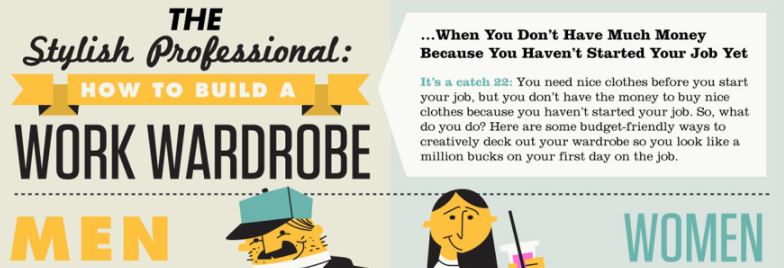Inappropriate clothing in the workplace
As we have mentioned in earlier posts, your appearance is an important part of your non-verbal communication in the workplace and there are also benefits to dressing for success in the work environment.
Those are basically the dos. Today, however, we are going to go in the other direction: the don'ts. In short, you want avoid like the plague anything that does not translate into professionalism (DiGiacomo, n.d.).
Unfortunately, there is not a single, master rule of what constitutes an appropriate attire in the work setting. There are several circumstances that you have to factor in. For instance, what your job entails. A suit is definitely appropriate for an office environment, but it would not look that awesome on a hockey goalkeeper entering the rink. So, context matters. Make sure you get acquainted with the company's dress code before your first day on the job.
Your position matters as well. If you have an entry level job at your local groceries store, you might want to keep the suits in the closet until after you hit a couple of promotions. Wearing a company apron and/or name tag would, on the other hand, definitely be in order for, to customers, you are the company's face — they are entitled to give patrons visible cues as to tell apart their workers from other customers. And if you are not that into portraying their organization as they wish, they are well within their rights to let you go: why keep an employee who refuses to convey the look and feel of their brand?
As a rule of thumb, unless you are a sumo wrestler, a lifeguard or a lingerie model, you want to keep some skin out of the sight of your boss, co-workers and customers, and leave it for your social and personal lives (Luckwaldt, 2014). Make sure you wear attires that cover from the elbow up, and pants from the ankle up — for women, skirts are acceptable work-attire, but make sure they are nearer your knee than your mid-thigh (Sandeen, n.d.).
Please, take into consideration that this is not a comprehensive guide to what to avoid, but rather a first approach to the topic. To help you expand on the dos and dont's, you might want to take a look at the following infographic, provided by HR Bartender (Lauby, 2012).

(click on image to expand)
REFERENCES
DiGiacomo, R. (n.d.) Work Attire: What's Appropriate and What's Not. Monster. Retrieved from https://www.monster.com
Lauby, S. (2012, February 17). Friday Distraction: Building a Work Wardrobe [infographic]. HR Bartender. Retrieved from https://www.hrbartender.com/
Luckwaldt, J.H. (2014). The Do’s and Don’ts of Business Attire for Women [infographic]. Payscale Human Capital. Retrieved from http://www.payscale.com/
Sandeen, D. (n.d.). Inappropriate Business Attire for Females. Love To Know. Retrieved from http://www.lovetoknow.com
Comments
Post a Comment